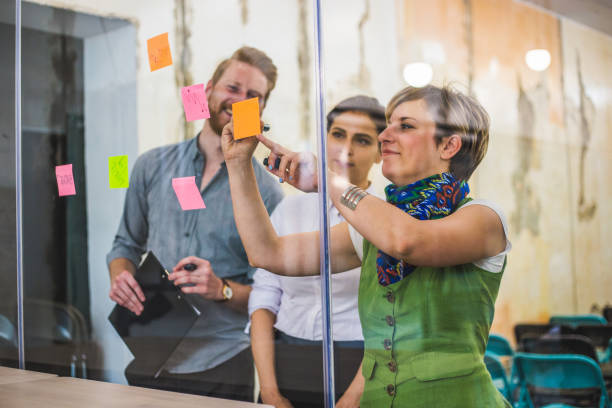In the evolving landscape of workplace culture and the creative economy, the significance of well-designed workshops has never been more pivotal. Creative spaces are not just a trend; they are the very catalysts that foster innovation, collaboration, and productivity. In this article, we commence an exploration into the art and science of workshop design, spotlighting how thoughtfully curated environments can embolden creative minds to thrive.
Understanding the Role of Environment in Creativity
Before delving into the intricacies of designing workshops, it is essential to recognise the impact of one’s environment on creativity. Research in environmental psychology suggests that our surroundings can either enhance or impede our ability to think abstractly and generate novel ideas. The colours, layout, lighting, and even the furniture within a space collectively influence how individuals interact with their environment and, by extension, their creative output.
The Philosophy Behind Creative Workshop Spaces
The philosophy of workshop design is grounded in the principle that physical spaces should be adaptive and reflective of the needs of their users. A well-designed workshop must provide a stimulating atmosphere while maintaining flexibility to adapt to various types of creative processes and collaborative work.
Designers of innovative workshops pay close attention to every detail from acoustic properties and visual stimuli to the ease of movement and accessibility. By prioritising these elements, workshop environments can become incubators for ideas, allowing individuals and teams to brainstorm, prototype, and refine their innovations with greater ease and efficiency.
Key Components of Effective Workshop Design
A multitude of factors come into play when designing a space conducive to creativity; however, some elements are universally acknowledged as vital components of an effective workshop design. These encompass the physical, emotional, and intellectual needs of the users and include:
Aesthetic Appeal and Comfort
Beauty and aesthetics can be incredibly motivating. An inviting workshop should boast a balanced colour scheme that stimulates creativity without overwhelming the senses. Comfort is equally crucial, with ergonomic furniture and ample space to move around being indispensable for lengthy brainstorming sessions.
Flexibility and Versatility
Spaces intended for innovation must be malleable, allowing for the area to be reconfigured according to different activities, be it group discussions, individual work, or hands-on prototyping exercises. Modular furniture and mobile dividers can aid in seamlessly transforming the space as needed.
Technological Integration
Technology is an integral part of modern workshop environments. Integrated tools such as smart boards, high-speed internet connectivity, and flexible power sources ensure that the workshop is functional in our increasingly digital world.
Collaborative and Private Areas
An ideal workshop provides opportunities for collaboration without neglecting the need for privacy. Designing spaces for group work alongside quiet zones for individual reflection enables a balance between teamwork and personal ideation.
Natural Elements
Incorporating natural elements like plants and maximising natural light can contribute to a healthier, more welcoming space. Biophilic design has been shown to enhance mood and mental acuity, further nurturing the creative process.
Incorporating User Experience into Workshop Design
Effective workshop spaces are ones that have been conceived with a deep understanding of user experience (UX). A space’s usability and accessibility are integral to facilitating an unobstructed flow of creativity. Engaging with potential users during the design process can provide invaluable insights into the specific needs and preferences of those who will inhabit the space.
Examples of Innovation in Workshop Design
Across various industries, there are shining examples of how innovative workshop design has led to enhanced creativity and productivity. Tech giants often boast expansive, flexible floor plans that promote both serendipitous encounters and structured teamwork. Academic institutions have been redesigning classrooms and laboratories to be more conducive to project-based learning and collaboration.
More recently, businesses of all sizes are turning to specialised firms for crafting workshops that reflect their unique brand and creative goals. Every detail, from acoustics to artwork, is engineered to spark innovation and galvanise teams.
Implementing a Successful Workshop Design
To implement a successful workshop design, it’s advisable to embark on a well-thought-out planning process, engaging with design professionals who can translate creative aspirations into reality. Stakeholders should be involved from the outset, ensuring that the vision for the workshop aligns with the goals of the organisation and the needs of its employees.
Concluding Thoughts on Crafting Creative Spaces
Workshop design is not a one-size-fits-all proposition; it requires a tailored approach that resonates with the culture and aspirations of the organisation it serves. By fostering an environment ripe for innovation, businesses and institutions can unlock the full potential of their creative workforce, driving forward an era of unprecedented growth and change.
Incepting a creative space designed for innovation hinges on understanding and applying these multidimensional design principles. With a thoughtful and intentional approach towards workshop design, any space can be transformed into a dynamic ecosystem that nurtures creativity and paves the way for future innovations.
When crafted with insight and care, a well-designed workshop is more than a space – it is a testament to the power of environment in shaping our ideas, and ultimately, the innovations that propel us forward in our respective fields. Thus, the journey of crafting a creative space becomes a strategic endeavour, pivotal to the sustained growth and evolution of any forward-thinking enterprise.
